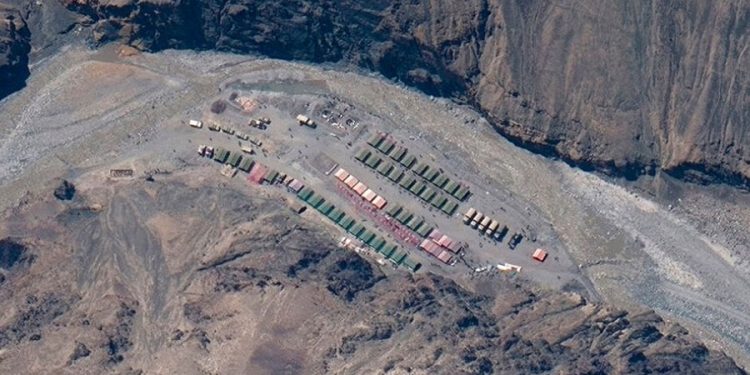New Delhi: Some of the defence infrastructure being set up by China near its border with India is ‘alarming’ and the ‘destabilising and corrosive’ behaviour of the Chinese Communist Party (CCP) in the Indo-Pacific region is simply not helpful, US Army’s Pacific Commanding General Charles Flynn said here Wednesday. The Armed Forces of India and China have been engaged in a tense border standoff in eastern Ladakh since May 5, 2020. Then there was a violent clash between the two sides in the Pangong lake areas.
Last month, it came to light that China is constructing a second bridge in an area held by it around the strategically key Pangong Tso lake in eastern Ladakh. The bridge is being built to help its military quickly mobilise troops in the region.
China has also been establishing other infrastructure such as roads and residential areas in the border areas with India.
When asked about his assessment of the India-China border standoff in Ladakh, Flynn told reporters here, “I believe that the activity level is eye-opening and I think the some of the infrastructure that is being created in the (Chinese Army’s) western theatre command is alarming.”
The western theatre command of the Chinese army borders India.
Flynn said when one sees China’s military arsenal in all domains, one must ask the question ‘why is it needed’.
“So, I do not have a crystal ball to tell you how it (India-China border standoff) is going to end or where we will be at. I will express to you that it is worthy of asking this question and try to get their response as to what are their intentions,” Flynn noted.
Also read: Situation stable in eastern Ladakh, says Army commander
The visiting US General said the talks that are going on between India and China are helpful. “However, behaviour matters here as well. So, understanding what they are saying is one thing but the way they are acting and behaving by the way of build-up is concerning. It should be concerning to every one of us,” Charles Flynn pointed out.
Flynn also talked about how the behaviour of China has changed between 2014 and 2022. He said when he looks back on what the CCP and the PRC (People’s Republic of China) were doing then to what they are doing today, it can be said that they have taken an ‘incremental and insidious path’.
The destabilising and corrosive behaviour that they project into the Indo-Pacific region is simply not helpful. I think it is worthy of us working together as a counterweight to some of those corrosive and corruptive behaviours that the Chinese do,” Flynn observed.
“Our ability to strengthen the relationships in the region as a counterweight to those destabilising activities and to strengthen the network of allies and partners and like-minded countries that care about the protection of their people, national sovereignty, land, resources, free and open Pacific Ocean and society,” Flynn said.
Indian Army Chief General Manoj Pande had May 9 said China’s intention has been to keep ‘alive’ the boundary question with India though it remains the ‘basic’ issue between the two countries.
India and China have held 15 rounds of military talks so far to resolve the eastern Ladakh row. As a result of the talks, the two sides completed the disengagement process last year on the north and south banks of the Pangong lake and in the Gogra area. However, each side currently has around 50,000 to 60,000 troops along the Line of Actual Control (LAC) in the sensitive sector.
Flynn said the armies of India and the US did a joint military exercise in Alaska last year. He stressed such engagement increases readiness to respond to any crisis and has a deterrent effect in the region.
“I am really excited about the future of ‘yudhabhyas’ (combat exercise) this year in India where General Pande and Lieutenant General Raju have agreed to do the exercise at 9,000-10,000 feet above sea level,” Flynn noted.
An exercise at such a high altitude increases the readiness, joint inter-operability and coalition inter-operability of the armies of both the countries, he said.
“At the end of the day, this sharing of soldier, tactical and operational practices increases everybody’s readiness to respond to whatever crisis may occur. This has a deterrent effect in the region,” Flynn pointed out.






































